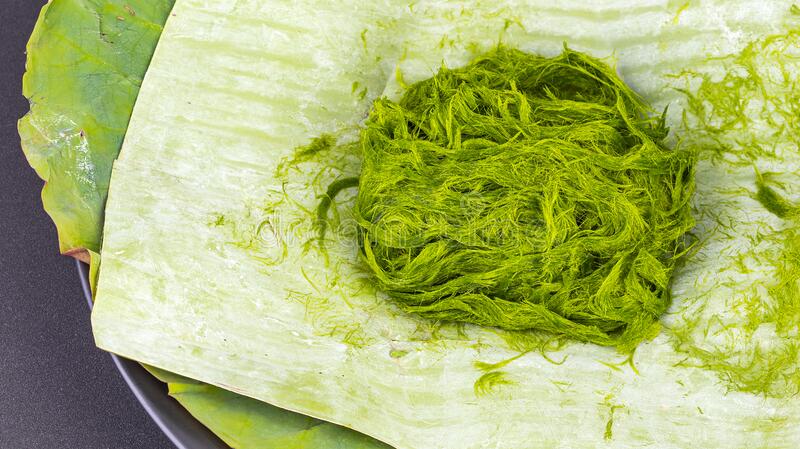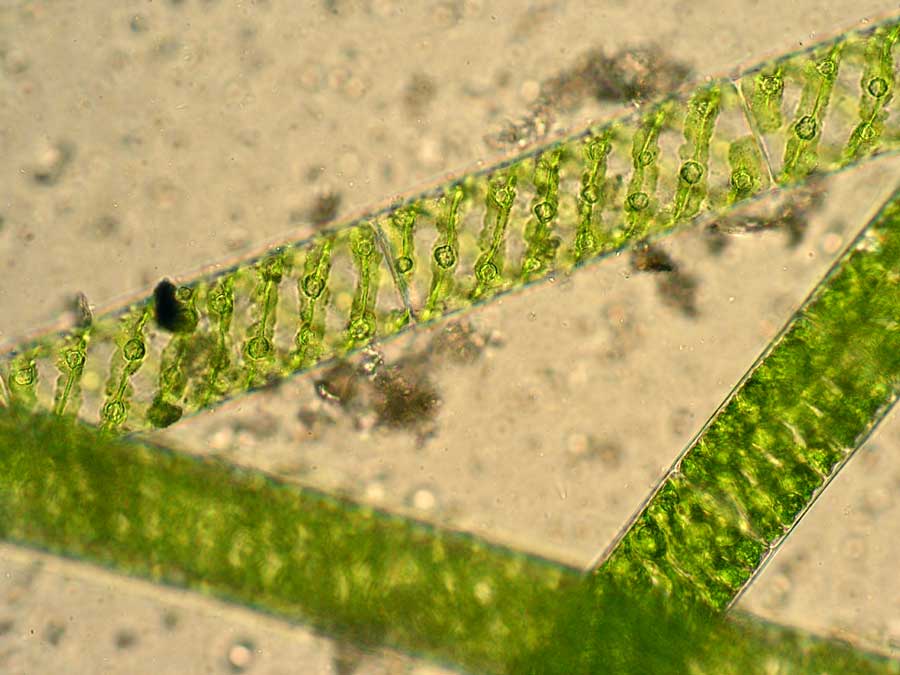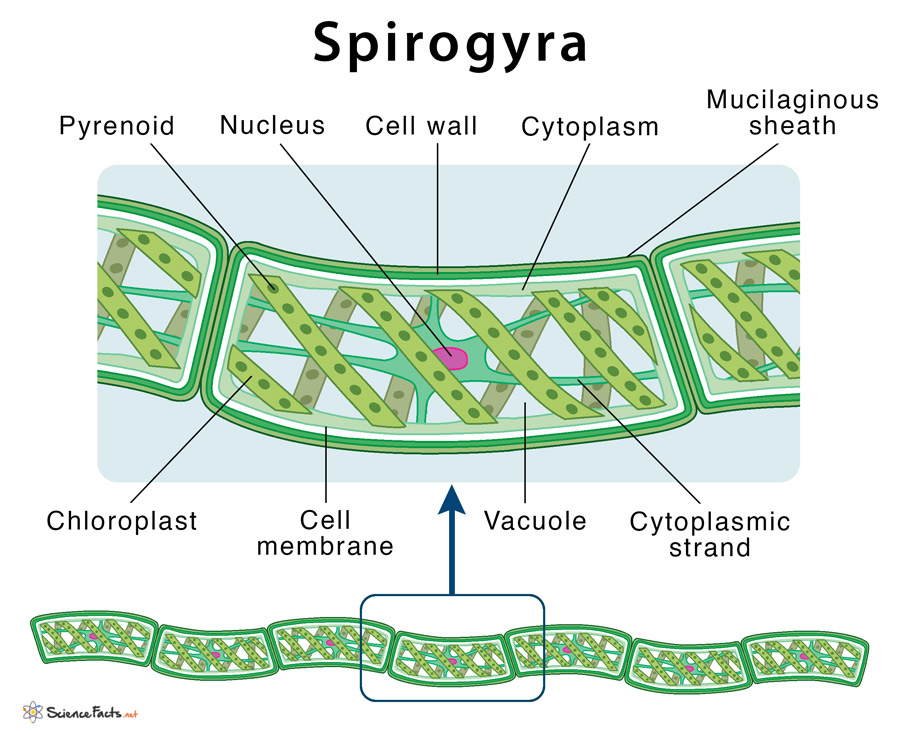Parts and their Morphology
How do They Respire
Similar to plants, during daytime Spirogyra takes in carbon dioxide dissolved in water to release a relatively large volume of oxygen using specialized cells called stomata. The released oxygen remains trapped as tiny bubbles between the tangling strands of their filamentous body that helps them to float in water and become visible as a slimy green mat. At night and on overcast days, the process reverses, as Spirogyra consumes oxygen and produces carbon dioxide as a metabolic waste product of cellular respiration.
What do They Eat
Although they thrive to grow in nutrient-rich environments, Spirogyra produces their own food using the green pigment chlorophyll and sunlight through photosynthesis, thus performing an autotrophic mode of nutrition.
How do Spirogyra Reproduce
Broadly they perform three modes of reproduction that are described below:
Vegetative Reproduction
It occurs mainly by a process called fragmentation. Under favorable conditions of growth, the walls of adjacent cells dissolve, thereby causing breakage of the filament. After fragmentation, the vegetative filament develops into a new filament where each fragment undergoes multiple division and elongation to form a new filament. When a Spirogyra filament attains considerable length, it breaks into smaller pieces that can grow into a mature organism. Fragmentation is also found to occur due to a mechanical injury or a change in their aquatic medium’s salinity and temperature.
Asexual Reproduction
During unfavorable growth conditions, the cytoplasmic content of the cell shrinks and looses water, developing a hard covering around the cell, resulting in the formation of spores. Depending upon the thickness of the cell wall and their ability to move, spores in Spirogyra can be of three types – aplanospores (thin-walled and non-motile), akinetes (thick-walled and non-motile) and azygospores (thin-walled and motile). While akinetes and aplanospores develop into a new filament under favorable conditions after the decay of the parent filament, azygospores fail to fuse during sexual reproduction and develop into a new filament asexually. Asexual reproduction is thus a form of adaptation in Spirogyra.
Sexual Reproduction
It occurs during favorable conditions of growth through a process known as conjugation. It is of two types: a) Scalariform Conjugation: Here the two participating cells or gametes with a haploid number (n) of chromosomes come in close contact and develop a small tube-like structures called papillae that fuse to form a bridge connecting the two cells known as conjugation tube. The male gamete squeezes through the conjugation tube and gets passed into the female gamete thus forming a diploid chromosome structure (2n) called zygote. A single zygote produces multiple thick-walled diploid cells called zygospores, which under the suitable condition of growth, form new filaments. b) Lateral Conjugation: It occurs between the cells of the same filament. Lateral Conjugation is of two types:
Indirect Lateral Conjugation: Here the male gamete moves through the conjugation tube and gets fused with the female gamete, forming a zygote or zygospore, which then develop into new filament.Direct Lateral Conjugation: It is a primitive type of conjugation where the entire cytoplasmic content of the male gamete migrates through the pore and gets fused with the female gamete forming zygospore, which later develops into new filament under suitable conditions.
Thus the sexual life cycle of Spirogyra describes the interchange between the only diploid-phased (2n) zygospore and the haploid phased (n) filamentous cells.


